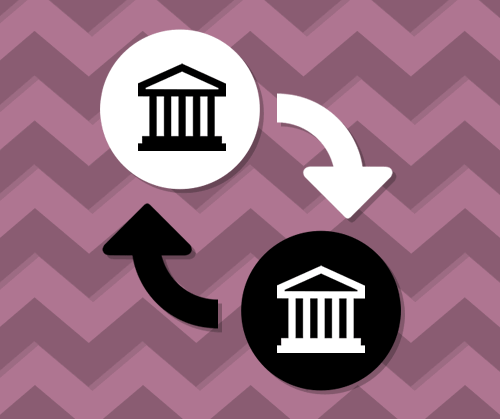Increased access to museums for members and more revenue for your institution? Sign us up! Reciprocal associations are a win-win for both the cultural institution and their members, and they can offer your institution or organization an incredible variety of benefits. So if you still have some questions about reciprocal programs, we have answers!
What is a reciprocal program, anyway?
Reciprocal programs are collaborations between cultural institutions that extend privileges and benefits to the members of all participating institutions, giving members exclusive offers to other sites. This may include discounts, free admission, special newsletters, and other great deals.
What’s in it for partner institutions?
The short answer: everything!
“[Partner institutions] can expect an increase in the number of visits, an increase in their revenue, more donations, and more exposure.” - Jane Levy, Executive Director of the Association of Nature Center Administrators
Partners organizations can charge higher premiums for memberships that offer reciprocal benefits. According to Virginia Phillippi, the Executive Director of the North American Reciprocal Museum (NARM) Association®, partner organizations of NARM have noticed that existing members are often willing to upgrade to a membership that offers reciprocal benefits, despite the additional costs!
“The North American Reciprocal Museum (NARM) Association® is a community of institutions that have come together to create additional value and sense of membership for each institution’s members. Each NARM member institution offers a new and different world of discovery for its members and visitors while each is also a part of a whole as a member of the NARM Association which makes us a wonderful mosaic of art museums and galleries, historical museums and societies, botanical gardens, children’s museums, and zoos.”
How long until we see the benefits?
The short answer: not very long!
Often it takes less than a month for partner organizations to see the benefits. Take it from the Aerospace Museum of California. They joined NARM in March 2017 and very quickly started seeing an increase in the sales of Family Memberships that offered reciprocal benefits. In fact, within the next month, their membership sales increased by 129% compared to the previous year!
And often, simply joining a reciprocal program will bring your institution more exposure. Twania Brewster of the Chicago Children’s Museum says that her institution is not worried about the extra cost of providing reciprocal memberships. This year, she says, they’re on track to receive 10,000 museum visitors from other partner organizations. That’s 10,000 visits and purchases that they wouldn’t have had otherwise!
But wait, there’s more!
Many reciprocal programs offer unique benefits to member institutions, in addition to the potential increase in revenue and exposure. Jane Levy, the Executive Director to the Association of Nature Center Administrators (ANCA) explains that other benefits include access to a network of professional organizations in similar fields, access to online discussions, conferences, and consulting services. NARM offers members a customizable profile on their website and free advertising on NARM social media, as well as a quarterly online magazine promoting new member institutions. These additional benefits can be an enticing factor in the decision to join a reciprocal program.
One size fits all?
What’s your business model? How does your institution generate income? According to John Jacobsen, President and CEO of White Oaks Institute, reciprocal programs might not be a perfect fit for some business models. Institutions that rely primarily on admissions for their revenue won’t benefit much from a reciprocal program because it will cut too heavily into their main profit stream.
On the other hand, institutions with business models that incorporate a variety of revenue streams (such as parking, retail, and food services) have an opportunity to make profit because they will attract new visitors who, although they won’t be paying an entrance fee, will still spend money on souvenirs, food, beverages, and parking.
Still uncertain? Don’t worry!
Museums are often hesitant to join a reciprocal program because they think that the cost will outweigh the benefits, when in fact it’s just the opposite. As Virginia Phillippi (NARM) says, “Many museums see members pay more just to get the NARM benefits.” The Aerospace Museum in California only has to sell two family memberships to cover their institution’s membership dues with NARM. This past May, the Aerospace Museum sold 21% more memberships than the same period last year!
Value your members!
Why should your organization invest in reciprocal associations? Because it shows your members that you care about them and want to continue to deliver value. The Japanese American National Museum (JANM) in California offers reciprocal benefits because they want to add value to the member experience. The primary reason to offer reciprocal benefits, according to The Frick Collection and the Aerospace Museum of California, is to make their members feel like they are being valued. Sounds about right to us!
And finally…
Reciprocal programs are clearly beneficial to their partner organizations. Not only can they provide an increase in revenue, but they also connect museums and cultural institutions into a larger network that provides more resources, collaboration, and exposure for all.
Ready to take the plunge? Let us know what you love about reciprocal programs!
Acknowledgements
We would like to thank the museums, cultural institutions, and reciprocal associations who shared their experiences with us!

